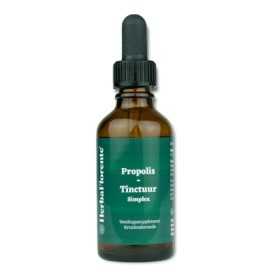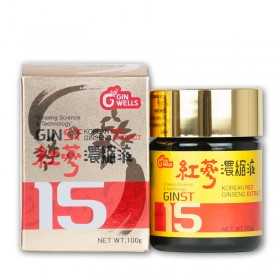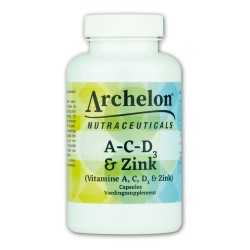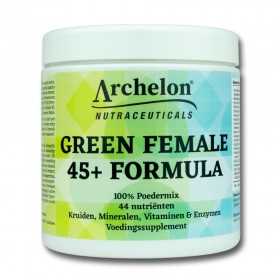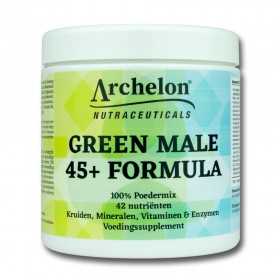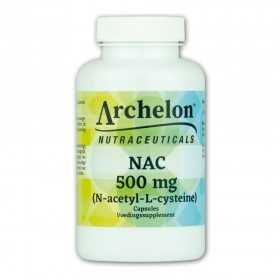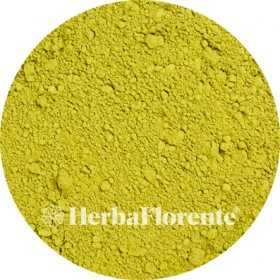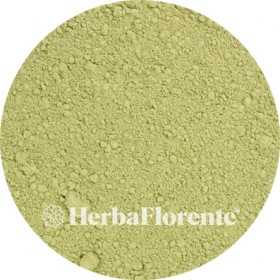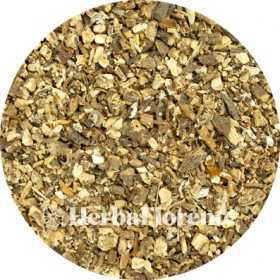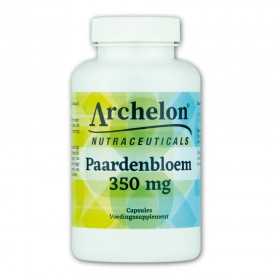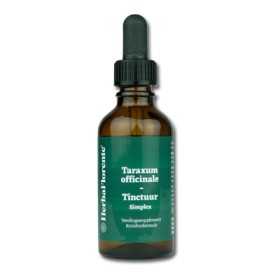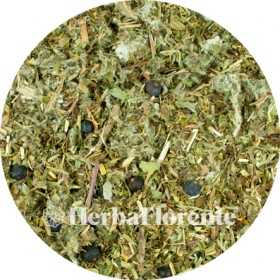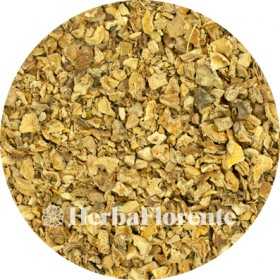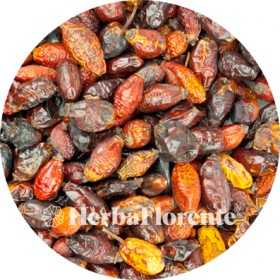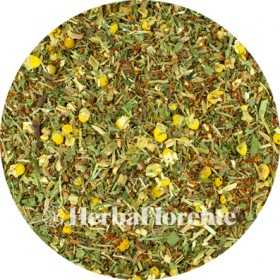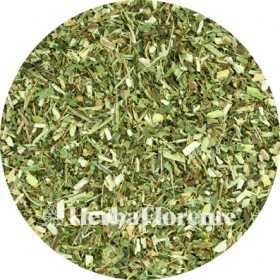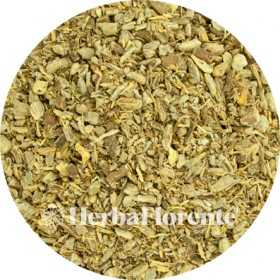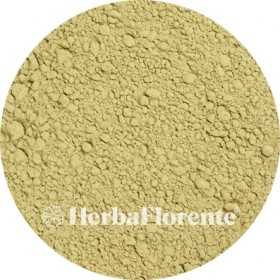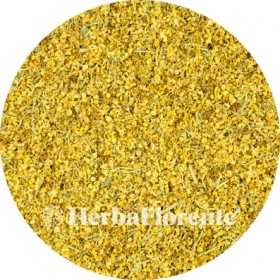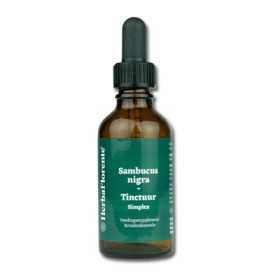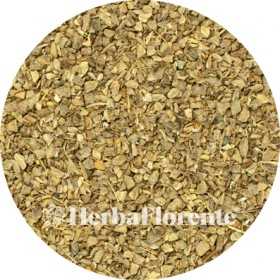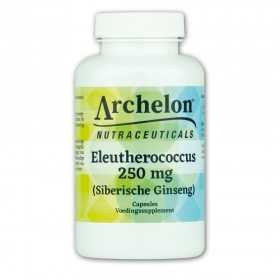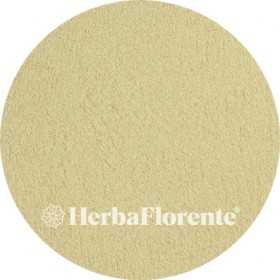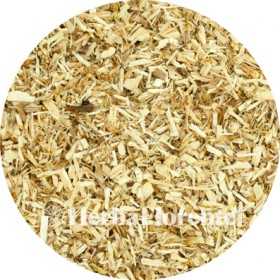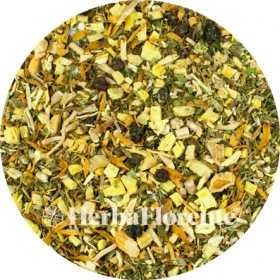Health Goals
There are 390 products.
Damiana - Damianae mex. (Turnera diffusa) - Grounded
In Mexico, women often prepare tea from the fragrant leaves of the damiana shrub or smoke them to stimulate their feelings of pleasure. Damiana leaf contains several active substances, including beta-sitosterol, arbutin and alkaloids.
Dandelion (Herb & Root) - Taraxum officinale
The rich nutritional value of dandelions makes it advisable to regularly pick some fresh leaves in the wild and add them to salads. They are especially tasty in the spring. The fresh yellow flowers can be used as a cheerful decoration in salads and dried they can be processed into a 'wild' herbal tea.
Dandelions contain a high level of bitter substances, which always indicates that they are beneficial for liver and gallbladder function.
Dandelion (Herb) - Taraxum officinale - Cut
The rich nutritional value of dandelions makes it advisable to regularly pick some fresh leaves in the wild and add them to salads. They are especially tasty in the spring. The fresh yellow flowers can be used as a cheerful decoration in salads and dried they can be processed into a 'wild' herbal tea.
Dandelions contain a high level of bitter substances, which always indicates that they are beneficial for liver and gallbladder function.
Dandelion (Root) - Taraxum officinale
The rich nutritional value of dandelions makes it advisable to regularly pick some fresh leaves in the wild and add them to salads. They are especially tasty in the spring. The fresh yellow flowers can be used as a cheerful decoration in salads and dried they can be processed into a 'wild' herbal tea.
Dandelions contain a high level of bitter substances, which always indicates that they are beneficial for liver and gallbladder function.
Dandelion - 350 mg
The rich nutritional value of dandelions makes it advisable to regularly pick some fresh leaves in the wild and add them to salads. They are especially tasty in the spring. The fresh yellow flowers can be used as a cheerful decoration in salads and dried they can be processed into a 'wild' herbal tea.
Dandelions contain a high level of bitter substances, which always indicates that they are beneficial for liver and gallbladder function.
Dandelion Tincture - Taraxum officinale Tincture
Dandelion (Taraxacum officinale) has been known for centuries for its ability to support liver and gallbladder function. Both the root and the above-ground parts of the plant are rich in nutrients. In addition, dandelion has a beneficial effect on digestion.
The rich nutritional value of dandelions makes it advisable to regularly pick some fresh leaves in the wild and add them to salads. They are especially tasty in the spring. The fresh yellow flowers can be used as a cheerful decoration in salads and dried they can be processed into a 'wild' herbal tea.
Detox (Blood-Liver-Kidney) Herbal Tea
Support for detox, Blood, Liver and Kidneys
Devil's Claw - Harpagophytum procumbems
Dill - Anethum graveolens
Dill is an indispensable seasoning in the kitchen and is often used for preserving vegetables, salmon, mayonnaise and potato salad. It is also delicious in bread, stews, salads, soups, on fish, peas, beans, carrots, pumpkin, beets and potatoes.
Dogrose - Rosa canina
It is a large, upright growing shrub that can reach a height of 1-4 meters, with long, arching branches that sometimes hang over. The leaves and branches without glands are green, sometimes with a reddish tinge.
The dog rose blooms from June to July with flowers 3.5 to 4.5 centimeters in size, usually pale pink but sometimes white, and they grow in groups of one to ten.
After flowering, a rose hip develops, a fleshy flower base with nutty fruits inside. The rose hip is oval or ovoid, red-orange in color, and measures 1-2.5 cm long and 1-1.8 cm wide.
Early Morning Herbal Tea
Nice for early morning
Echinacea (Coneflower) (Herb) - Echinaceae purp.
This plant has a rich history and originally comes from North America. Indigenous tribes used this perennial plant for its beneficial effects on the immune system. Colonist doctor H.C.F. Meyer adopted this knowledge from the indigenous population and brought the first product based on echinacea onto the market in 1871.
Echinacea (Coneflower) (Root) - Echinaceae purp.
This plant has a rich history and originally comes from North America. Indigenous tribes used this perennial plant for its beneficial effects on the immune system. Colonist doctor H.C.F. Meyer adopted this knowledge from the indigenous population and brought the first product based on echinacea onto the market in 1871.
Echinacea (Coneflower) - Echinaceae purp.
This plant has a rich history and originally comes from North America. Indigenous tribes used this perennial plant for its beneficial effects on the immune system. Colonist doctor H.C.F. Meyer adopted this knowledge from the indigenous population and brought the first product based on echinacea onto the market in 1871.
Echinacea (Red Coneflower) - 350 mg
This plant has a rich history and originally comes from North America. Indigenous tribes used this perennial plant for its beneficial effects on the immune system. Colonist doctor H.C.F. Meyer adopted this knowledge from the indigenous population and brought the first product based on echinacea onto the market in 1871.
Elder - Sambuci nigri
Elder - Sambuci nigri
The berries, which ripen towards the end of summer, are rich in natural vitamin C and are considered a powerful antioxidant. They are often used to support the immune system and respiratory system. In addition to flavonoids, the berries also contain anthocyanins, natural sugars and tannins, just like the blossoms.
Elderberry Tincture - Sambucus nigra Tincture
The elder (Sambucus nigra L.) is a native tree/shrub in the Netherlands that is widespread in various places in our country. Towards the end of May the elder tree blooms and produces large umbels of small, creamy white flowers that give off a sweet, floral scent. These blossoms are used to make elderflower liqueur, syrup or pancakes. In addition to their delicious taste, the blossoms are also rich in substances, including up to 3% flavonoids such as rutin, quercetin and astragalin. In addition, they contain tannins (tannins), triterpenes, fatty acids and essential oil.
Elecampane - Inula helenium
The ancient Greeks called the plant helenion, which means "the radiant, the splendid." This name is related to hèlios, which means "sun". There are several myths surrounding the naming. The Romans adopted the Greek name and called the plant inula. When Linnaeus introduced the scientific Latin name Inula helenium in 1753, he combined the Roman genus name with the Greek specific name.
Eleutherococcus (Siberian Ginseng) - 250 mg
The carrots are a rich source of beta-carotene, vitamins B1, B2, C and E, and they are high in eleutherosides. It is important not to confuse Siberian ginseng with its Korean variant (Panax ginseng) or the American one (Panax quinquefolius). Not only do the names differ, but also the properties.
Eleutherococcus (Siberian Ginseng) - Eleutherococcus
The carrots are a rich source of beta-carotene, vitamins B1, B2, C and E, and they are high in eleutherosides. It is important not to confuse Siberian ginseng with its Korean variant (Panax ginseng) or the American one (Panax quinquefolius). Not only do the names differ, but also the properties.
Eleutherococcus (Siberian Ginseng) - Eleutherococcus - Cut
The carrots are a rich source of beta-carotene, vitamins B1, B2, C and E, and they are high in eleutherosides. It is important not to confuse Siberian ginseng with its Korean variant (Panax ginseng) or the American one (Panax quinquefolius). Not only do the names differ, but also the properties.
Elm - Ulmi camp. - Cut
Energy Herbal Tea
Great for an energy boost
Achieve Your Health Goals with Natural Support
At Eerlijkgezond.com, we believe in the power of nature. Our extensive range of supplements, herbs, vitamins, and minerals has been carefully curated to help you achieve your specific health goals. Whether you're working on a stronger immune system, more energy throughout the day, better digestion, restful sleep, hormonal balance, or supple joints – our natural products provide the support you're looking for.
Why Choose Eerlijkgezond.com? All products in our assortment have been selected based on quality and natural composition. We only work with trusted brands that are transparent about their ingredients and production processes. This ensures your body receives what it deserves: pure, effective, and safe supplements without unnecessary additives.
Your Health, Your Choice Every body is unique and has different needs. That's why we offer a wide range of products for various health goals. Take the time to discover what suits you best and invest in your wellbeing with the natural solutions from Eerlijkgezond.com.

